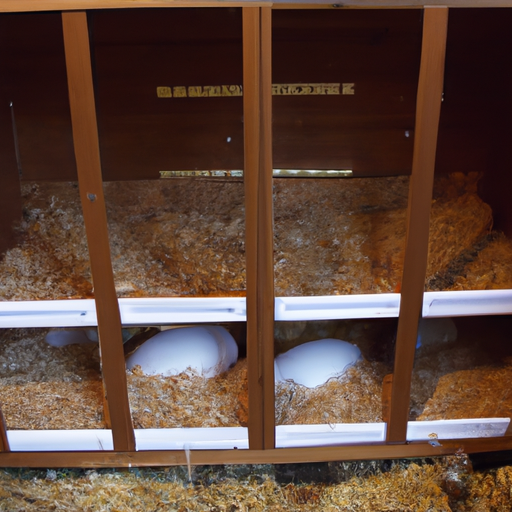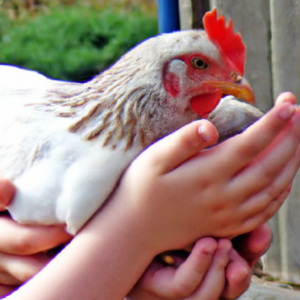
If you’ve ever wondered whether chickens can be convinced to lay their eggs in designated nesting boxes, you’re not alone. Many backyard poultry enthusiasts have pondered this very question. It’s a potential game-changer for egg collection and organization, but can our feathered friends be taught this particular skill? Let’s explore the fascinating world of chicken behavior and find out if they can be trained to lay their eggs in specific nesting boxes.
Benefits of Training Chickens to Lay Eggs in Designated Nesting Boxes
Training chickens to lay eggs in designated nesting boxes can offer several benefits for both the chickens and the poultry farmer. Let’s take a closer look at some of these benefits.
Improved Egg Quality
When chickens are trained to lay eggs in designated nesting boxes, the eggs are less likely to become dirty or damaged by contact with the floor or other surfaces. This can result in improved egg quality, with less risk of bacterial contamination. Clean, intact eggs are not only more visually appealing but also safer for consumption.
Easier Egg Collection
Having chickens lay eggs in designated nesting boxes makes egg collection much easier and more efficient. Instead of searching for eggs in various corners of the coop or outdoor areas, you know exactly where to find them. This can save you time and effort, especially if you have a larger flock.
Reduced Waste and Breakages
When chickens are trained to lay eggs in designated nesting boxes, the risk of eggs being laid in inconvenient locations or accidentally broken is significantly reduced. Eggs that are laid in hidden or hard-to-reach places can be left unnoticed and may end up wasted or spoiled. By providing chickens with designated nesting boxes, you can minimize wastage and ensure that the eggs are safe and intact.
Understanding Chicken Behavior
To successfully train chickens to lay eggs in designated nesting boxes, it’s essential to understand their behavior and the factors that influence their nesting habits.
The Natural Nesting Instinct
Chickens naturally have a nesting instinct, which drives them to find a suitable place to lay their eggs. By recognizing this instinct and providing proper nesting conditions, you can encourage your chickens to lay eggs in the designated nesting boxes.
The Importance of Establishing a Pecking Order
In a flock of chickens, a pecking order is established to determine dominance and hierarchy. When it comes to nesting boxes, the more dominant hens typically claim the best spots. Understanding and managing the pecking order dynamics can help ensure that every chicken has fair access to the nesting boxes.
The Influence of the Environment
The environment in which your chickens are housed can also influence their nesting behavior. Factors such as temperature, lighting, noise levels, and predator presence can impact how comfortable and safe chickens feel when choosing a nesting spot. Creating an environment that mimics the natural habitat of chickens can help encourage them to lay eggs in designated nesting boxes.
Creating an Ideal Nesting Box Setup
To train chickens to lay eggs in designated nesting boxes successfully, you need to provide well-designed and strategically placed nesting boxes. Consider the following aspects when setting up your nesting boxes:
Choosing the Right Nesting Box
Select nesting boxes that are suitable for your specific breed and flock size. The boxes should provide enough space for the chickens to comfortably enter, turn around, and lay their eggs. A standard size is about 12×12 inches, but larger boxes may be necessary for bigger breeds.
Placing the Nesting Boxes
Position the nesting boxes in a quiet, secluded area of the coop, away from high-traffic zones and disturbances. This provides chickens with a sense of safety and privacy while laying their eggs. Elevating the nesting boxes slightly off the ground can also help prevent predators from accessing them.
Providing Privacy and Comfort
Line the nesting boxes with soft materials such as straw, hay, or wood shavings to create a cozy and comfortable environment. Chickens prefer to have a soft bedding material to lay their eggs on. This also helps absorb any potential mess and keeps the eggs clean. Ensure that the nesting boxes are well-ventilated but not exposed to direct drafts.
Train Chicks to Recognize the Nesting Boxes
Training chicks from a young age to recognize the designated nesting boxes can help establish good habits as they mature. Here are some steps to follow when training chicks:
Introduce the Chicks to the Nesting Boxes
Allow the chicks to explore and familiarize themselves with the nesting boxes from an early age. Gently place them inside the boxes and allow them to wander around. This helps them associate the nesting boxes with a safe and comfortable space.
Use Positive Reinforcement Techniques
Reward the chicks with treats or verbal praise when they enter the nesting boxes or show interest. Positive reinforcement helps create positive associations with the nesting boxes and encourages the desired behavior.
Repeat Training Sessions
Regularly repeat the training sessions to reinforce and solidify the chicks’ understanding of the designated nesting boxes. Consistency and patience are key to successful training.
Encouraging Hens to Lay Eggs in Nesting Boxes
Once your hens have reached the laying age, you can encourage them to consistently lay eggs in the designated nesting boxes using the following techniques:
Keep the Nesting Boxes Clean
Maintain cleanliness in the nesting boxes by regularly removing any soiled bedding, feathers, or debris. A clean nesting box is far more enticing for hens to lay their eggs in.
Add Nesting Materials
Provide nesting materials such as straw, hay, or wood shavings inside the nesting boxes. The soft bedding material helps mimic the natural nest-building instinct of chickens and encourages them to lay eggs in the designated areas.
Provide Adequate Lighting
Ensure that the nesting boxes are well lit during the daytime. Sufficient lighting inside the nesting boxes can help chickens feel more comfortable and confident in using them for egg-laying. Natural light is ideal, but artificial lighting can be used to supplement if needed.
Dealing with Common Challenges
Training chickens to lay eggs in designated nesting boxes may come with a few challenges. However, understanding and addressing these challenges can help overcome them effectively.
Egg Eating Behavior
Some chickens may develop a habit of eating their own or other chickens’ eggs. This behavior can be discouraged by promptly collecting the eggs, providing appropriate nutrition and enrichment, and employing deterrent techniques such as using fake eggs or bitter substances on the shells.
Broody Hens
Broody hens may become overly protective of their eggs and refuse to leave the nesting boxes. This can disrupt the laying routine and prevent other chickens from accessing the boxes. Techniques like cooling the nests, removing eggs, or providing separate brooding areas can help manage broody behavior.
Nesting Box Dominance
In some cases, dominant hens may monopolize the nesting boxes, preventing lower-ranking chickens from using them. Providing multiple nesting boxes and ensuring an ample supply of nesting space can help minimize conflicts and encourage fair access for all chickens.
Monitoring and Maintenance
Regular monitoring and maintenance of the nesting boxes are essential to ensure optimal conditions for egg-laying. Here are a few important tasks to keep in mind:
Check for Proper Egg Formation
Inspect the eggs regularly to ensure that they have proper shell formation and are free from any abnormalities. Abnormalities may indicate underlying health issues in the chickens and should be addressed promptly.
Collect Eggs Regularly
Collect the eggs at least once or twice a day to prevent them from piling up and getting damaged. Prompt collection also reduces the risk of chickens pecking at or eating the eggs.
Inspect and Clean Nesting Boxes
Regularly inspect the nesting boxes for cleanliness, signs of pests, and any necessary repairs. Clean the boxes as needed and replace the bedding materials to maintain hygiene and comfort for the chickens.
Conclusion
Training chickens to lay eggs in designated nesting boxes offers numerous benefits, including improved egg quality, easier egg collection, and reduced waste and breakages. Understanding chicken behavior, creating an ideal nesting box setup, and training chicks from a young age are key to successful training. By providing a comfortable and suitable environment, encouraging proper nesting behavior, and addressing any challenges that arise, you can ensure a productive and efficient laying routine for your chickens. Happy egg-laying!







